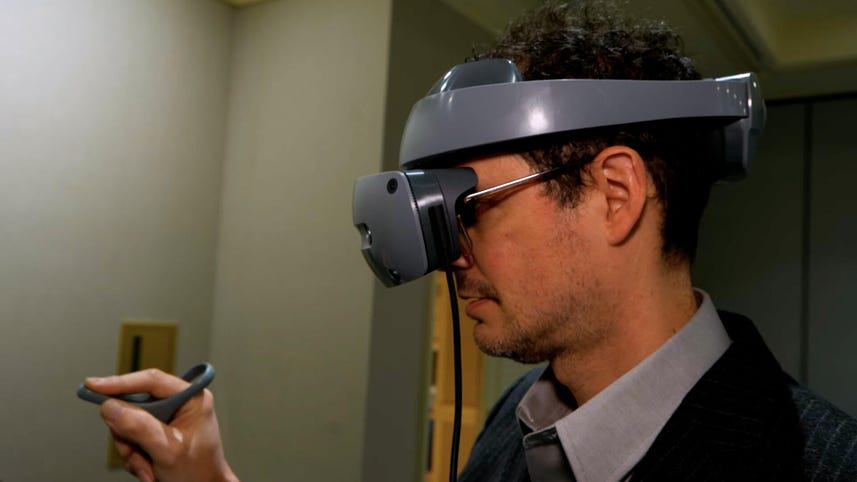
Speaker 1: Hey guys. I’m here with Sony’s newest VR headset. This was just announced this thing is actually built as a spatial content creation system. It’s designed for engineers and designers. That’s right, commercial use, not for sale to the general public, but it is going on sale later this year to those folks. Now I got a chance to try this thing out, and it is really cool. It’s pretty different from something like a Quest or A-P-S-V-R from Sony. The controllers are actually one of the things that really make it stand out. So there’s a little pointer controller [00:00:30] that you can use to manipulate things in VR space, and there’s a little ring controller that you can use to pinch stuff and move it around. So in my time, it felt really intuitive. You can see I actually did this demo and there’s a museum space here. There’s some papers.
Speaker 1: There’s even this camera that I could grab and take a picture of the virtual space. Part of the reason why it’s so easy to use is because there is this brand new chip in here, the Snapdragon XR two plus Gen two chip from Qualcomm. This is the first VR headset [00:01:00] that uses it. So the idea is this thing will actually accelerate a lot of the things that are happening. The same chip will be used in upcoming headsets from Samsung and Google that compete against Apple Vision Pro. It enables more cameras and sensors, 4K video and faster connection with laptops, tablets, and phones. Now, this headset is actually tethered to a computer for the most part, but it can also be disconnected and used as a standalone headset. There’s a battery in here. They’re not disclosing how long the battery lasts, but maybe three hours. And really what makes this thing stand [00:01:30] apart is the design of the headset.
Speaker 1: So it’s got this flip down visor so you can actually easily go back and forth between being in your VR world and flipping up the visor. It’s got two cameras that’s for ar. Another powerful feature of this headset is the two 4K micro OLED displays. Now they gave a really crisp image from what I could see. Resolution was excellent. I was able to grab these little pages and bring them right up to my face. Oh, this is amazing how close I can bring it to [00:02:00] my eye. Now, what’s this going to be used for? They maybe use it for visualizing and modeling sets in the virtual world, a way to explore 3D designs before deploying them, possibly for training and simulation. And Siemens Sony’s partner in this device actually has a lot of industrial partners that they work with to create objects. In this demo, you can actually see there’s a Formula One racing wheel that’s being designed. All sorts of industrial objects can be designed using this system according to Sony. So that’s a quick look at one of the newest, most powerful VR headsets, not for sale [00:02:30] to consumers. This is a prototype version. We’ll see the final version later this year. But some really cool features on this product.

